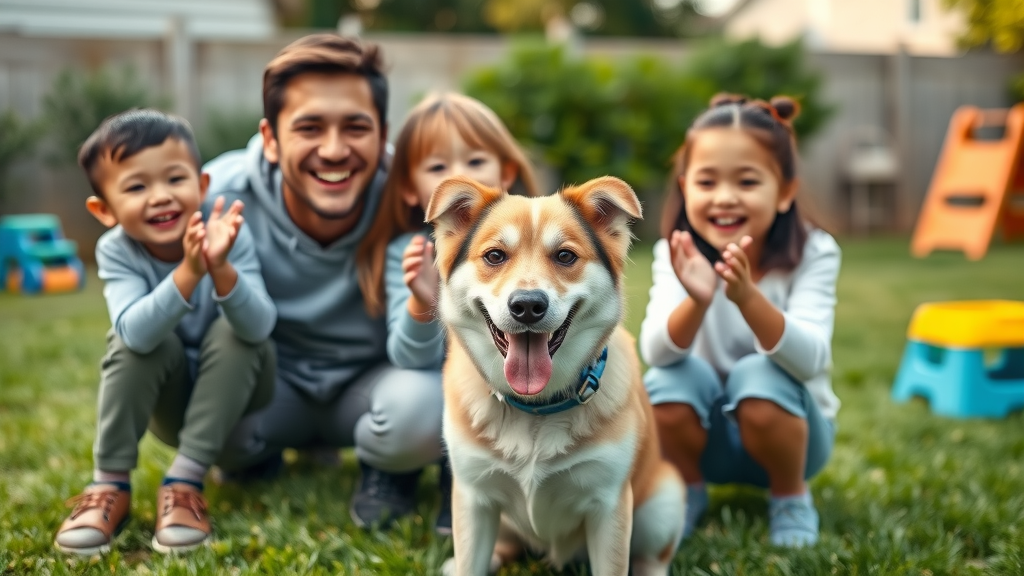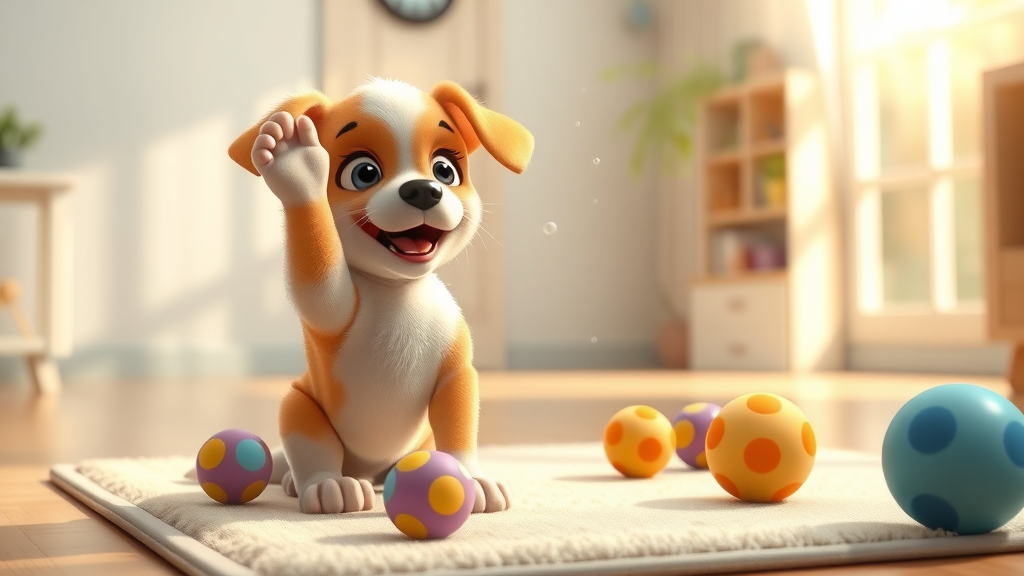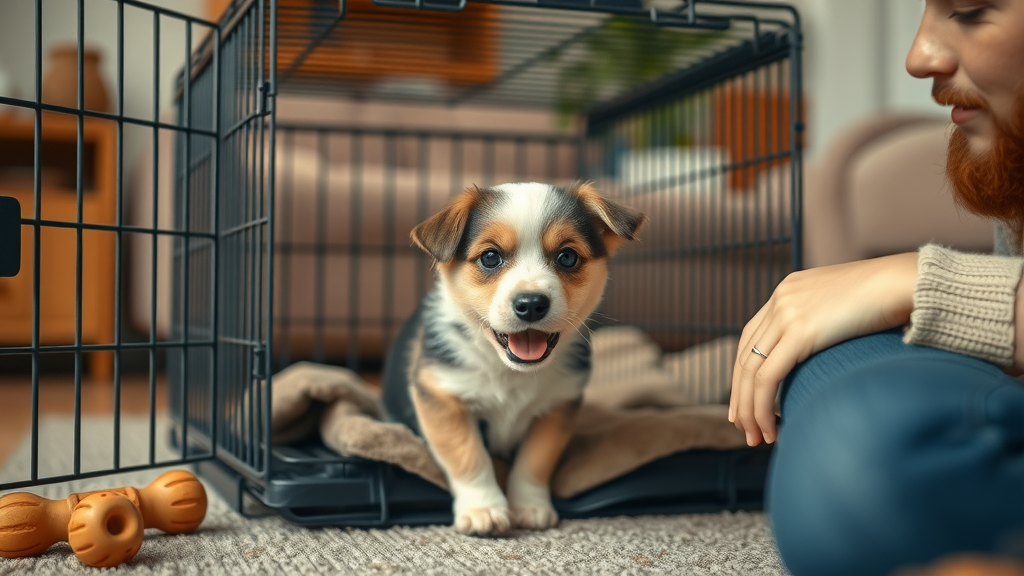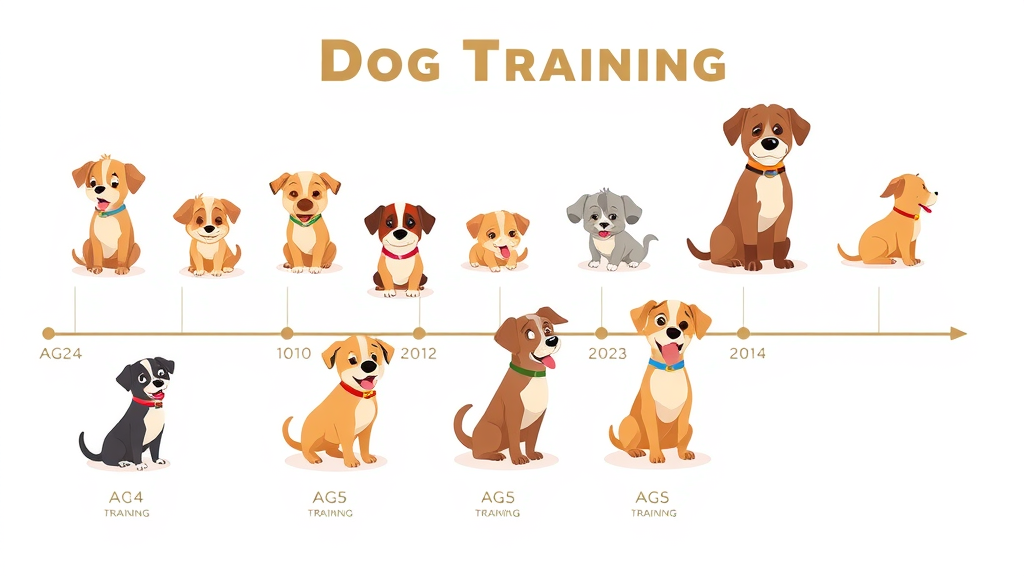Did you know: Puppies begin soaking up training cues as early as eight weeks old ? This means the habits you teach your young pup in their first months can shape their behavior for a lifetime. Whether you’re a new puppy parent or welcoming another furry friend, understanding what’s the best age to start dog training is key for raising a happy, well-mannered companion. Read on for expert advice and breakthroughs every pet owner needs!
Why Timing Matters: What’s the Best Age to Start Dog Training?
If you’re wondering what’s the best age to start dog training , you’re not alone! Leading experts agree that early training is crucial for a dog’s long-term development. Recent studies highlight that puppies exposed to basic commands, structure, and positive interactions as young as eight weeks old grow into more confident and responsive adult dogs. Early training not only shapes good behavior—it helps your puppy grow up happy, social, and adaptable.
- Early training forms the foundation for socialization, preventing anxiety and fear issues in adult dogs.
- Training your pup young maximizes their attention span and makes learning fun and engaging, which supports their mental growth.
- Experts reveal that dogs introduced to gentle commands and crate training before 16 weeks adapt faster and respond better to challenges as they age.
"Puppies as young as eight weeks can begin fundamental lessons that set them up for life." – Certified Dog Trainer

At a Glance: Optimal Stages to Start Puppy Training for Your Pup’s Success
Setting your puppy up for success begins with recognizing their developmental stages. Each stage requires different training goals, from gentle exposure to basic obedience. As you start training , consider your pup’s evolving needs by age:
| Stage | Puppy Age | Recommended Training Focus | Key Milestones |
|---|---|---|---|
| Neonatal | 0-2 weeks | Limited—Mother’s care | Body warmth, feeding, basic safety |
| Socialization | 3-8 weeks | Mild exposure | Gentle handling, noises, short positive experiences |
| Critical Learning | 8-16 weeks | Basic puppy training, crate training, positive reinforcement | Name, potty training, sit, short commands, bite inhibition |
| Adolescence | 4-6 months | Advanced basic commands, short board and train sessions | Leash manners, patience, impulse control, recall |
| Maturity | 6-12 months | Reinforce and maintain behaviors | Consistent response to commands, household rules |
What You’ll Gain from Understanding What’s the Best Age to Start Dog Training?
Knowing what’s the best age to start dog training empowers pet owners to make the most of their dog’s learning potential. By understanding optimal puppy training windows, you can avoid common pitfalls like ingrained bad habits or missed socialization. Here’s what else you’ll get from starting right:
- Discover how to maximize a dog’s learning for both basic puppy and advanced obedience skills
- Avoid common pitfalls of starting training too late—like challenging behavior and stubbornness in adult dogs
- Get practical insight into creating structured training sessions and applying positive reinforcement at the key moment in your puppy’s growth

Recognizing the Signs: When to Begin Training Your Pup
Every dog is unique—so how do you know when your young pup is ready to start training ? Recognizing readiness ensures your puppy training journey is successful, enjoyable, and stress-free for both of you. Watch for cues and signals that your puppy is eager to learn, and be prepared to adapt to their evolving attention span and social skills.
Understanding your pup’s developmental phase means you can tailor training sessions to their learning style. Puppies typically show readiness to learn through increased curiosity, playfulness, and the ability to focus on short tasks. This is the perfect opportunity to introduce basic puppy skills and socialization in a gentle, consistent way.
The Science Behind Puppy Training Readiness
Puppy training readiness depends on how your dog’s brain and body are developing. During the first 8 weeks, puppies are just beginning to experience the world. By 8-16 weeks, their brains are “primed” to absorb new information rapidly—making this the start training sweet spot. At this stage, short attention spans mean sessions must be brief and positive, using plenty of encouragement and rewards. Research shows that puppies exposed to new sights, sounds, and simple commands in a supportive environment during this window retain training better later in life.
It’s important to note that not all breeds mature at the same rate—working breeds may show readiness slightly earlier, while toy breeds sometimes need extra nurturing before structured lessons. No matter the pace, recognizing your puppy’s development gives you an edge in setting the training pace and style.
The goal is to foster a learning environment where your puppy feels safe to experiment, make mistakes, and receive immediate feedback. This approach not only aids in faster basic puppy training but also builds lifelong trust between pet and owner.
Key Indicators Your Dog Is Ready to Start Training
Ready to start training ? Here’s what to look for in your young pup :
- Behavioral cues: Eager following, making eye contact, responding to your voice, and showing curiosity about new people and toys.
- Socialization markers: Willingness to play, greet, and experience gentle touch from varied humans and animals.
- Breed considerations: Some breeds mature emotionally quicker or respond to training cues at a different pace—adapt your program accordingly for best results.
Puppies are most receptive to positive reinforcement and basic puppy training once they show signs of focus—even briefly. Use these early signs to introduce gentle structure and enjoyable training sessions that keep their tail wagging.
Don’t worry if your puppy seems distracted or shy—that’s entirely normal. Adjust your pace, use high-value treats, and keep sessions short to match their limited attention spans. With patience and observation, you’ll know exactly when to introduce each new element of your training program.
How to Start Training Your Puppy with Success
Beginning with the right approach makes all the difference in your puppy training experience. Research-backed strategies focus on short, enjoyable training sessions that match your young pup’s energy and curiosity. Setting consistent routines helps your puppy grow into a confident, well-adjusted family member.
Starting simple and building gradually—with lots of positive reinforcement—ensures that foundational skills are solid before moving on to advanced training. From day one, prioritize gentle methods, consistency, and patience as you teach your puppy new commands and behaviors.
Designing Effective Training Sessions for Young Pups
The secret to training your puppy lies in balancing stimulation with your pup’s attention span. For young pups, keep sessions short , upbeat, and tied to positive experiences like mealtimes or play. A typical training session shouldn’t exceed 5–10 minutes for puppies under 16 weeks, with one or two skills practiced per session. This matches their ability to focus and helps solidify good habits for the future.
Engaging your puppy through interactive toys, treats, and praise encourages natural learning. Changing up the training environment—like switching between different rooms or quiet outdoor spaces—boosts generalization so your pup can apply skills everywhere, not just in a single room.

Establishing a Basic Puppy Training Program
Setting up a simple, repeatable training program is key for basic puppy training . Begin by defining your goals: name recognition, potty training, crate acclimation, and introductory commands like “sit.” A good program balances gentle structure with adaptability, ensuring that each day brings a small, rewarding challenge. Track progress, celebrate every milestone, and be ready to switch tactics if your puppy isn’t responding—what matters most is keeping things fun and pressure-free.
Pair short lessons with daily routines, such as practicing “sit” before meals or “come” before leash walks. This cements positive training associations and helps your puppy understand the link between cues and rewards. Over time, a structured program makes dog training feel as natural to your pet as playtime or naptime.
Teaching Your Puppy with Positive Reinforcement Techniques
Positive reinforcement is at the heart of every successful puppy training approach—especially when determining what’s the best age to start dog training . Use these step-by-step tips to launch your new training program :
- Pick starter commands like sit, stay, come, and leash etiquette —all perfectly suited for your young pup’s development.
- Reward desirable behaviors instantly with treats, praise, or gentle petting.
- Keep training sessions short (no more than 5-10 minutes), focusing on one behavior at a time.
- Never use punishment; instead, redirect or ignore undesired actions while reinforcing the behaviors you want.
- Gradually increase the difficulty as your puppy’s attention span, confidence, and skills grow.
Remember, positive reinforcement not only teaches your pup new skills— it builds trust, resilience, and a lifelong love of learning .
Mastering the Basics: Early Dog Training Milestones
Milestone moments in your puppy training journey are cause for celebration! From successfully completing potty training to reliably obeying basic commands, each stage plays a vital role in shaping a confident, friendly adult dog. The right timing—paired with a flexible training program—ensures that your pup acquires skills that stick for life.
Most importantly, approach each milestone with patience and joy. With a little consistency and a lot of encouragement, you’ll see your young pup reach new heights faster than you ever imagined.
Potty Training and Crate Training: When and How to Begin
Potty training often tops the list for new pet owners. The best window to begin is as soon as your puppy settles into their new home (usually 8 weeks and up). Here’s the golden rule: take your puppy to the potty spot first thing in the morning, after meals, naps, and playtime. Praise, treats, and patience work wonders in reinforcing the right behavior. Track progress, and don’t punish mistakes—gentle redirection is most effective at reducing accidents.
Crate training can start alongside potty training. It helps your young pup learn independence, provides a safe retreat, and is invaluable for housebreaking. Encourage your puppy to explore the crate without pressure, placing treats and toys inside to create positive associations. Gradually build up the time spent with the door closed, beginning with short intervals, to ease them into extended stays.

Short, Frequent Sessions: Making Them Work for Any Age
Every training session should match your puppy’s capacity for attention. For young pups , this means sessions short —typically no longer than their age in minutes (e.g., 10 minutes for a 10-week-old puppy). Short, well-timed sessions prevent burnout, keep learning fun, and maximize skill retention for all ages—puppy, adolescent, or even adult dog .
Short sessions throughout the day—rather than long marathons—are especially important for reinforcing skills. Even adult dogs benefit from this model, as periodic positive experiences are key for maintaining good behavior and adapting to new environments or rules. Whenever possible, end each session on a happy note with a game or an extra treat!
Teaching Basic Commands to Your Young Pup
The foundation of basic puppy training begins with a handful of essential commands:
- Sit: Gently push your puppy’s bottom down and reward every successful attempt.
- Stay: Start with short durations, rewarding as soon as your pup remains still, even for a moment.
- Come: Crouch down, call your puppy, and celebrate every approach, reinforcing positive associations.
- Leash Etiquette: Begin indoors by rewarding your puppy for walking beside you before progressing outdoors.
Teaching your pup in bite-sized lessons ensures confidence and fun, not frustration. Pair each cue with cheerful praise and irresistible rewards—if you miss a session or your puppy struggles, that’s okay! Tomorrow brings a fresh opportunity to teach your puppy something new.
"Consistency in training is more important than intensity, especially for young dogs." – Animal Behaviorist
Board and Train Programs: When Are They Most Effective?
Considering a board and train program for your pup? These immersive experiences can fast-track progress when run by experienced handlers, especially if you’re busy or your dog faces behavioral challenges. However, matching the program to your puppy’s age and unique needs is crucial for lasting results.
Most board and train programs are designed for adolescents and older puppies—typically after the 4–6 month mark—when attention span and social skills are more developed. Carefully research providers, ask about their methods (favoring positive reinforcement), and ensure the program covers not just obedience but socialization and play. The foundation you lay at home remains just as important; continued learning after a board and train program is a must for permanent change.
Evaluating If Board and Train Is Right for Your Puppy
Before enrolling your young pup, consider their temperament and learning history. Board and train is ideal for dogs needing intensive help—especially if they struggle with focus or you lack the time to be hands-on daily. However, very young puppies (under 16 weeks) may feel overwhelmed away from home. If you opt in, choose a provider that creates safe, comforting environments, customizes activities for your dog’s stage of life, and encourages owner participation.

Choosing Age-Appropriate Board and Train Options
Not all board and train programs are created equal. Look for trainers who specialize in gradual, age-appropriate progression. Young pups need more gentle exposure and plenty of socialization, while adolescent or adult dogs can handle longer training blocks and more structured activities. Ask about daily routines, rest periods, and follow-up plans—continuity at home is vital for lasting change.
When selecting a training program , opt for one that prioritizes transparency, regular updates, and opportunities for owners to join in or observe sessions. Training your puppy is a team effort, and the right program helps everyone learn together.
Overcoming Challenges: Addressing Common Dog Training Setbacks by Age
Every training journey carries bumps along the way. Understanding which ages bring the toughest challenges helps you plan ahead—so you can decode stubborn behavior or setbacks with patience and strategy, no matter your dog’s developmental stage. Whether teaching an enthusiastic young pup or guiding an older rescue through new skills, knowing what to expect puts you a step ahead.
Research, patience, and flexibility are your best friends. If you hit a wall, pause to reassess your training program—sometimes, a small tweak or a new reward can refresh your dog’s interest and progress.
What Age Is Dog Training Most Effective? (PAA)
- Scientific evidence and expert opinions both point to 8–16 weeks as the most effective window for puppy training . During this stage, your puppy’s brain is exceptionally receptive to new information, social skills, and routines.
- However, dog training is a lifelong process—pups, adolescents, and even rescue adult dogs benefit greatly from proper structure and positive reinforcement at any age. Start early for the smoothest ride, but remember that good behavior can be developed over time with the right plan.
What Age Is It Easiest to Train a Dog? (PAA)
- The “socialization window” ( 3–16 weeks old) is the easiest time to instill good habits; young pups learn fast, transferring lessons between situations and people.
- Missed this window? No sweat! Consistent routines, high-value rewards, and exposure to a variety of positive experiences help older dogs—at any age—thrive in training, too. Adapt sessions to your dog’s maturity and personality for real progress.
What Is the 3-3-3 Rule for Dog Training? (PAA)
- The “3-3-3 rule” guides you through adaptation periods when bringing a new dog into your home:
- 3 days: Initial adjustment—your dog may feel overwhelmed, need quiet, and explore at their own pace.
- 3 weeks: Settling in—your dog learns basic routines, boundaries, and starts developing trust.
- 3 months: Full integration—your dog feels truly at home and is ready for more advanced training.
- This rule works at any age—be patient, set steady routines, and use positive reinforcement for the best results.

What Age Is a Dog Hardest to Train? (PAA)
- The adolescent phase (roughly 6–18 months) can make training challenging. Hormones, independence, and new distractions lead to pushback.
- Stay patient and consistent . Early foundation work pays off, but even if you’re late to start, structure, routines, and positive reinforcement can overcome these hurdles. Above all, never give up—a little effort goes a long way!
Customizing Training Programs to Your Dog’s Age, Breed, and Temperament
- Breed-specific recommendations: Energetic breeds (like Border Collies) thrive with more mental challenges. Companion dogs (like Cavaliers) respond to gentle repetition and comfort. Research your breed’s tendencies to tailor your plan.
- Adapting positive reinforcement: Shy or sensitive dogs flourish with calm voices and steady routines. Outgoing pups may love group play and advanced puzzle games. Keep your board and train options flexible, matching sessions and environments to your dog’s unique personality.
Remember, every training program should fit your dog—not the other way around. Watch, listen, and adjust as your puppy grows!
Expert Tips for Maximizing Dog Training at Any Stage of Life
- Keep training sessions short and upbeat, incorporating play and rest.
- Set clear household rules from the start—consistency is key!
- Rotate commands, games, and environments to prevent boredom and increase confidence.
- Don’t hesitate to seek help from certified trainers—especially if your dog seems stuck or overwhelmed.
- Busy family? Get everyone involved—teaching your puppy is a team effort!
- Celebrate small wins and take breaks—learning is lifelong, not a sprint.
"Training your puppy is an evolving journey—start early, but remember, it’s never too late!" – Renowned Veterinary Behaviorist
| Age | Dos | Don'ts |
|---|---|---|
| Under 8 weeks | Gentle handling, brief socialization with humans/siblings | No formal obedience or separation from litter |
| 8-16 weeks | Introduce basic commands, begin crate/potty training, positive reinforcement | Avoid harsh corrections, long solitary periods |
| 4-6 months | Advance to leash etiquette, more structured sessions, supervised social play | Skip mental/physical exercise, over-stimulate |
| 6-12 months | Reinforce & challenge, practice manners in new settings, maintain routines | Assume learning is “done,” use negative punishment |
| Adult | Regular refreshers, adapt training to age/energy, strong social cues | Ignore regressions, skip check-ins |
Frequently Asked Questions About What’s the Best Age to Start Dog Training?
-
Is it ever too late to start training an adult dog?
Never! While puppies may learn fastest, adult dogs can still master new skills with consistency, patience, and positive reinforcement in training sessions tailored to their maturity. -
Can late training cause behavior problems?
If you miss the early socialization window, your dog may need more time to overcome certain fears or habits, but training, patience, and professional support can help at any age. -
How do I handle regression or stubbornness?
Regression happens—especially during adolescence or stressful transitions. Keep training sessions short, positive, and repeat commands until your dog succeeds. -
Can older dogs learn advanced training or tricks?
Yes! Adult dogs often excel at advanced learning; focus on routines, high-value rewards, and patience. -
Can I switch methods if my training isn’t working?
Absolutely—every dog is unique. If a technique stalls, try adjusting timing, rewards, or environment. Consult a trainer for a tailored plan.
Transform Your Puppy’s Future: Start Dog Training at the Right Time
- Starting dog training early—and adapting it as your puppy grows—sets your companion up for a lifetime of happiness and harmony.
- Understanding what’s the best age to start dog training gives you the tools to build trust, teach good behavior, and overcome challenges at every phase.
Take action today: Begin your puppy training journey for a confident pup, a happy home, and lasting memories together!
Join Our Training Community and Stay Ahead of the Pack
- Don’t miss out! Our pack is growing — and you’re invited. 🐶🐱 Subscribe now to get exclusive stories, pet wellness tips, and product deals straight to your inbox.
- Get real-world advice, new research, and a supportive community for every stage of your puppy’s journey.
Starting your puppy’s training early is crucial for their development into a well-behaved and confident adult dog. According to the article “When to Start Training a Puppy: 5 Tips - 2025 - MasterClass,” initiating training as early as seven weeks of age is recommended. This period is vital for socialization and learning basic commands, as puppies are highly receptive to new experiences during this time. ( masterclass.com )
Similarly, “When Should Dog Training Begin? The Best Time to Start Training Your Puppy” emphasizes that the optimal time to start training is between 8 to 16 weeks of age. This window, often referred to as the critical socialization period, is when puppies are most open to learning new behaviors and adapting to various environments. ( happywithdogs.com )
By beginning training during these early stages, you can effectively teach your puppy essential skills and prevent the development of undesirable behaviors. If you’re serious about raising a well-mannered and adaptable dog, these resources provide valuable insights into the importance of early training and socialization.
 Add Row
Add Row  Add
Add 




Write A Comment